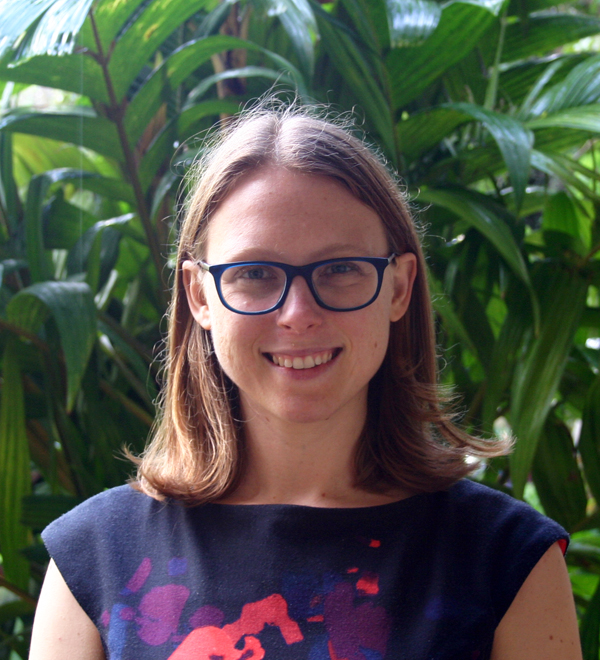Hintzen brokers CASC partnerships with Sea Grant
Katy Hintzen attended two meetings this fall in her role as PI-CASC Climate Adaptation Services Liaison, facilitating dialogues to promote climate adaptation partnerships between organizations large and small. We had the chance to sit down for a conversation with Katy about her recent efforts for PI-CASC.
To start, can you describe your roll with PI-CASC? What is a “Climate Adaptation Services Liaison”?
Fabulous question! The roll of Climate Adaptation Services Liaison is focused on building capacity in the CASCs, around the country, to do outreach and engagement work related to climate adaptation. We have this really good example of partnership in the Pacific Region between the University of Hawaiʻi Sea Grant College Program and PI-CASC, and there was interest in exploring opportunities for building more connectivity between Sea Grant programs and CASCs in other regions of the country.

So my role is mostly about brokering more relationships and connectivity between Sea Grant and CASC programs, but an important offshoot of that is augmenting the ability of CASCs to have outreach and engagement capacity.
For your presentations at Sea Grant Week (in September) and the National Adaptation Forum (in October), were you introducing the CASCs to Sea Grant?
I’ve done a number of presentations where I’ve introduced the CASCs to Sea Grant. So at Sea Grant Week, this was one of those, although it was in connection with a broader conversation about climate adaptation partnerships, with folks from Alaska, Pennsylvania, North Carolina, California, and me from Hawaiʻi. We all shared the different kinds of climate adaptation partnerships that we are involved in. In Alaska, they work quite closely with RISA (Regional Integrated Sciences and Assessments); I presented on what Hawaiʻi Sea Grant and PI-CASC do together; and then there were more local level partnerships, coalitions of folks interested in climate adaptation in a place-based sense.
At NAF, I had a half-day workshop that was explicitly focused on getting CASC people and Sea Grant people in the room together, to get to know each other as institutions. Based on a list of potential areas of collaboration, we split into small groups to talk about cultural resources, partnership with Indigenous communities, climate coastal issues, DEIJA (diversity, equity, inclusion, justice, and accessibility) work, and even communications. They talked about what the different entities were doing in those spaces, are there successes that we could work together to amplify, or gaps that we could work together to address.
Then I also had a broader session, called “Bridging the Bridges.” It was about federal boundary-space spanners, people from organizations like RISA, CASC, Sea Grant, and then someone who works in NOAA ESLR (Effects of Sea Level Rise Program). We talked about the importance of partnership across different entities that have these boundary-spanning spaces between community, academia, and federal, all working in climate. It was good; a lot of people came! I also worked with Lannette Rangel, from NCASC, developing the workshop and this session, collaboratively.
So is this collaboration idea a topic that there is a thirst for in climate adaptation?
I think so. I think everyone wants to connect more. There is increasingly an interest in leveraging and partnership, rather than a “I need to defend my niche” attitude, that maybe comes with there being more resources, and more acceptability around climate change as work at a national scale.
One valuable takeaway for the participants was from the second half of the session. We put up a big butcher-block paper on the back wall, and had people write what they “need” and what they “have” on post-it notes, with their contact information. Then people can match up: if people have a thing that you need, and if you have a thing that someone else needs, or maybe you need the same thing as someone else needs…It’s a nice networking exercise.
We are thrilled to have Katy in this position, where she is providing important service to PI-CASC and the CASC national network. Agencies and communities working together effectively, sharing their “need” and “have” lists on small and grand scales, is becoming increasingly more important as we all work to adapt to the changes our communities and regions are experiencing.

